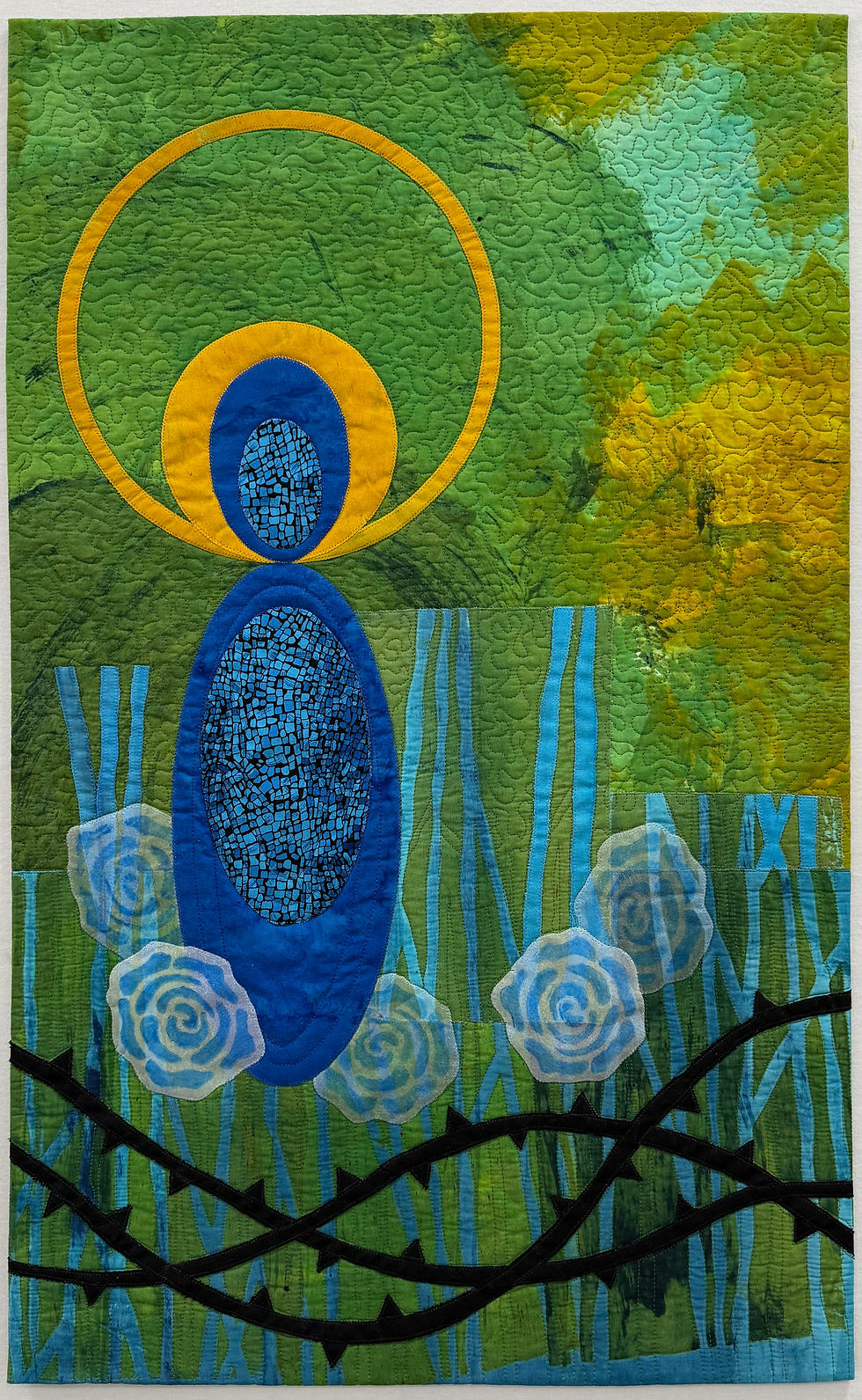Uta - Bridging the Cultural Gap
- Uta Lenk

- Jan 28, 2022
- 4 min read
Updated: May 23, 2022
When I first heard about the plans for this group I immediately was drawn to the thought to be getting in touch with several new-to-me-quilters around the world. I love traveling, I have lived abroad for several years of my life (in fact, the big unanswered question in my life is why I haven't managed to get out of Germany for permanent residency... but that's not the topic here), and international contacts for me are the spice of life.
Then we chose the topic 'bridges', and I was a bit at a loss first, because I am not usually a figurative maker. Accordingly, I did not want to start depicting a real bridge as in trying to replicate some famous or unknown piece of architecture. But I am a person of language, having been deeply involved in linguistics for a good while in my life and speaking (to a certain degree) a few other languages than my mother tongue. That was the starting point for my metaphorical interpretation of the term 'bridge'.
A bridge can be a piece of architecture, of course, and help people, vehicles, animals get over some impediment on their way. For example, I was a volunteer for an environmentalist group for a few years, carrying toads across the street that had been prevented from doing so on their own through temporary fences during the time when they are on the move for mating and reproduction. In other areas, some streets have been modified such that there are passageways beneath the streets and the toads get led there by architectural design. No a bridge in the strict way of 'crossing OVER something', nor did I consider myself a bridge as I was doing that.

But I was fulfilling a bridging function.
So can fabric. Fabrics from other cultures are fascinating for any fabric addict, and combining them is a bridging action. I quickly knew that I would be combining fabrics from very different cultures for this piece with the topic 'bridge'.
One fabric is a part of an old kimono I had once received from Kathleen Loomis for a joint project and not used up to any extent. The other fabric is a remnant I brought back with from a trip to South Africa, where we had gone to a shop with lots of Africania and the group of fabric aficionados I had been with went wild over the remnants that could be had by the pound.
I combined these two - Japan, South Africa - thinking at first I would then embroider with French knots and Cretan stitch. Four different cultures. Started on the French knots and soon realized that this was taking too long for my taste, no matter how much I like the stitch.

Another item I had wanted to add were these strange plastic clips that come with face protection masks we are all wearing these days to protect us from the virus. Certainly the panademic has been a kind of bridge in the sense of connection between the global population in the term that every country is affected by it. In Germany, it seems to be a means to increase division between different parts of the population - those who more or less happily or grudgingly abide by the rules neither of us likes, and those anti-believers who don't believe in vaccination, who think their personal liberty is being infringed on by rules that are meant to protect oneself and others. So these clips are a bit of an antidote to bridging, but I placed them across the small lines made from the African fabric, thinking that would symbolize a bridge of sorts. All the time I knew the title would be 'Bridging the Cultural Gap'.
Then I got thinking about cultural gaps, that there is no direct translation for that term in German, we speak of cultural differences, which of course need to be bridged as well, but we don't have the exact phrase - and I asked the other non-English speakers in the group for their languages' equivalent. Threw in a bit of Swedish, put them all in a file, enlarged the printout to cover the size of the piece.

I then transferred the text to transparent paper and stitched over the outlines. By then I had already attached the plastic clips - not a good idea, but I did not want to take them off again, special care and attention was necessary not to stitch through them.


Then the paper had to be removed - messy work!

And finally I stitched over the outlines to make them more prominent, but still not overlay the overall impression of the fabric level.

Because the text required a bit more room than would have been there if I had stayed with the original plan of a size of 16x16" (or 40x40cm) the piece turned into a rectangle in the end.

'Bridging the Cultural Gap', 2022, h 18", w 16", silk, cotton, polyester-blend, plastic clips, machine and hand stitched. Made by Uta Lenk.



Comments